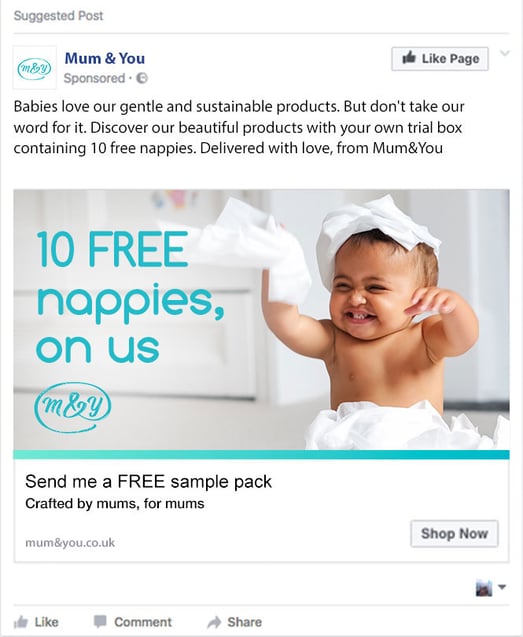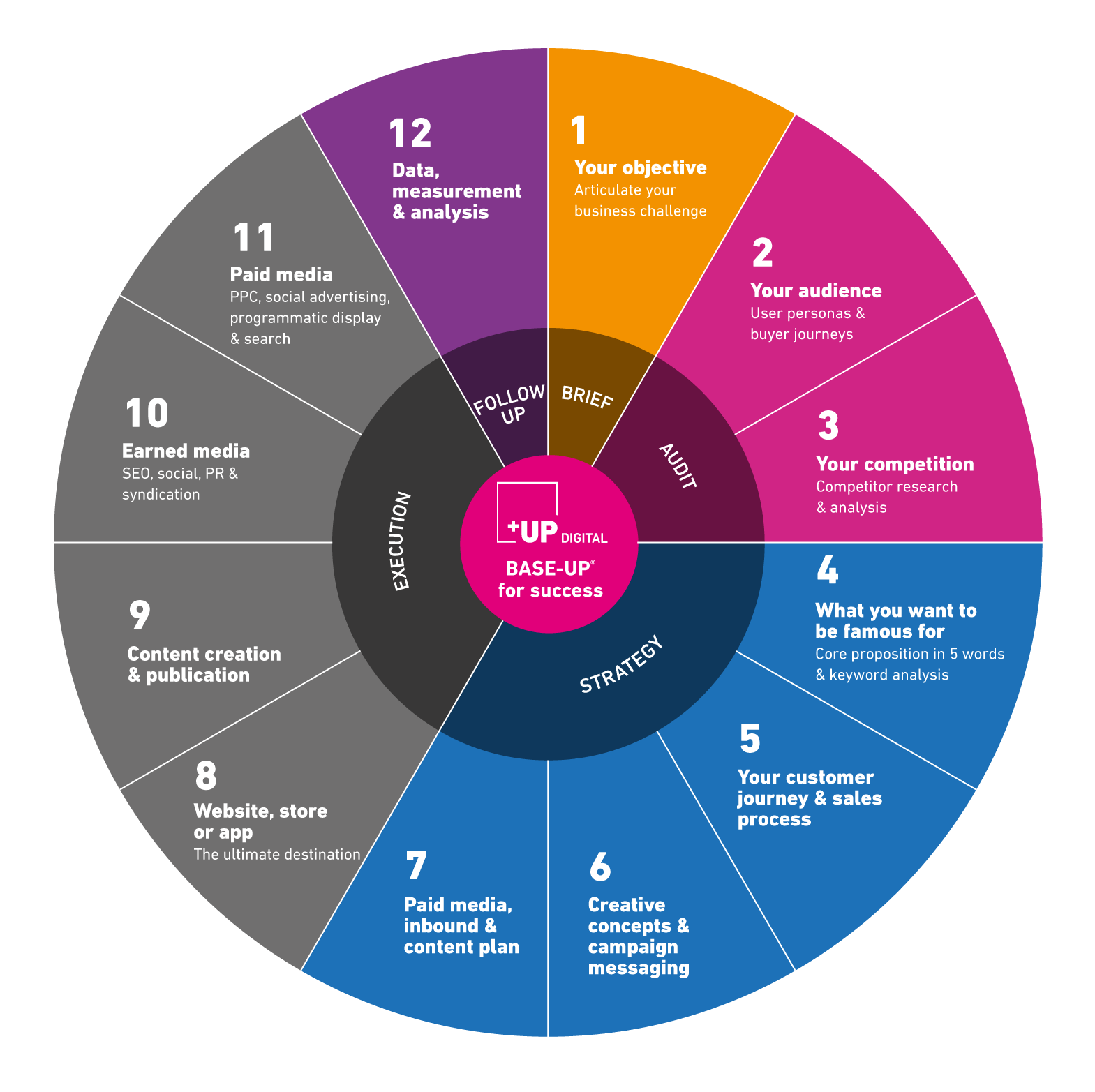What is digital advertising?
Those adverts you see on Facebook, sponsored search results on Google (or Bing, if you’re that way inclined). A cheeky sidebar banner featuring those shoes you were thinking of buying last night but didn’t. And of course, those infamous moments where you swear Facebook is reading your mind. It’s all digital advertising.
The more sophisticated, modern sibling of traditional ads. If done well, they are targeted, trackable and a wealth of information to marketing teams.
With so many tools to set up digital ads, there is scope for a full range of real-time reports. You can learn what motivates them to convert, and use this information to help build your buyer personas.
And, if you can’t decide on the creative or copy, you can even split test a multi-variant ad.
WebFX reports that 80% of shoppers research online. It’s fair to say a higher percentage of B2B decision makers will research suppliers this way too.
Inbound vs Paid Advertising
What about inbound marketing vs. paid advertising? Both have their pros and cons, and a successful digital marketing strategy will use a balance of the two. For instance, inbound or organic content is a great foundation to building consideration.
Whereas paid (or ads) are great for driving awareness and boosting conversion. They do this by reaching targeted leads who are further down the sales funnel, ready to make a decision.
Inbound marketing takes time and effort to get results. You’re stretching your net far and wide, inviting as many users as possible to visit your site. And they might not always be the best quality leads.
Budgets for digital ads are a lot more flexible than traditional, making it is less of a gamble to experiment.
Find out how we helped Mum&You with their digital ad strategy.
How to choose the right channel for your ads
So, you’re ready to allocate some of your budget to digital ads, but how do you know which channels are right for you? As always, refer to your customer personas.
If you choose to work with a digital marketing agency like us, we do the "hard work" identifying the best channels. To achieve this, we look at the following factors of your target audience:
- The sites they use
- What media they consume
- What motivates them to convert
It’s also a good idea to audit your key competitors. We also carry out a SWOT analysis (Strengths, Weaknesses, Opportunities and Threats).
What channels are available?
You are spoilt for choice. That said, different channels work better for different audiences and ad types.
Paid search is great for capturing active leads. These users are already seeking information based on the keywords from your campaign. PPC get an average conversion rate of 3.17%.
Display ads tend to perform best for driving brand awareness and consideration. They work best for retargeting rather than prospecting. So for example those ‘hey, remember those shoes you were looking at yesterday?' banners.
Social media advertising is the MVP here. Not only is it ideal for building awareness, it's also great for driving traffic and conversions. Plus you have a wide selection of channels at your disposal, each with their own merits depending on your target audience.
Before you can start planning the where and how, you need to start out with what you want to achieve.
Create clear goals
Ask yourself: what do you want the user to do when they see your ad?
It’s not enough to just want new business to come in. You need to consider:
- What’s your proposition?
- What problems are you looking to solve?
- Who are you targeting?
- Are you linking to content, a product/service, or an event?
- Are you looking to build your database?
To convert the user into a lead, the goal is to ‘pixel/tag’ them or capture their contact details. From there, you can trigger a lead nurture workflow to warm them. This is where inbound marketing goes hand in hand with paid.
Summary
Digital advertising is an ideal way to generate leads. With a flexible budget, you can create targeted campaigns across a range of channels, such as PPC, display retargeting and social media.
You’re likely to convert more leads and faster than your organic, inbound marketing activities. That said, the two work in partnership to help raise awareness, drive consideration.
Having clear goals will help you create a campaign that not only performs, but helps you learn more about your ideal customers.
Thinking about your digital advertising strategy?
Get a free consultation to discuss how to take your digital marketing to the next level.




